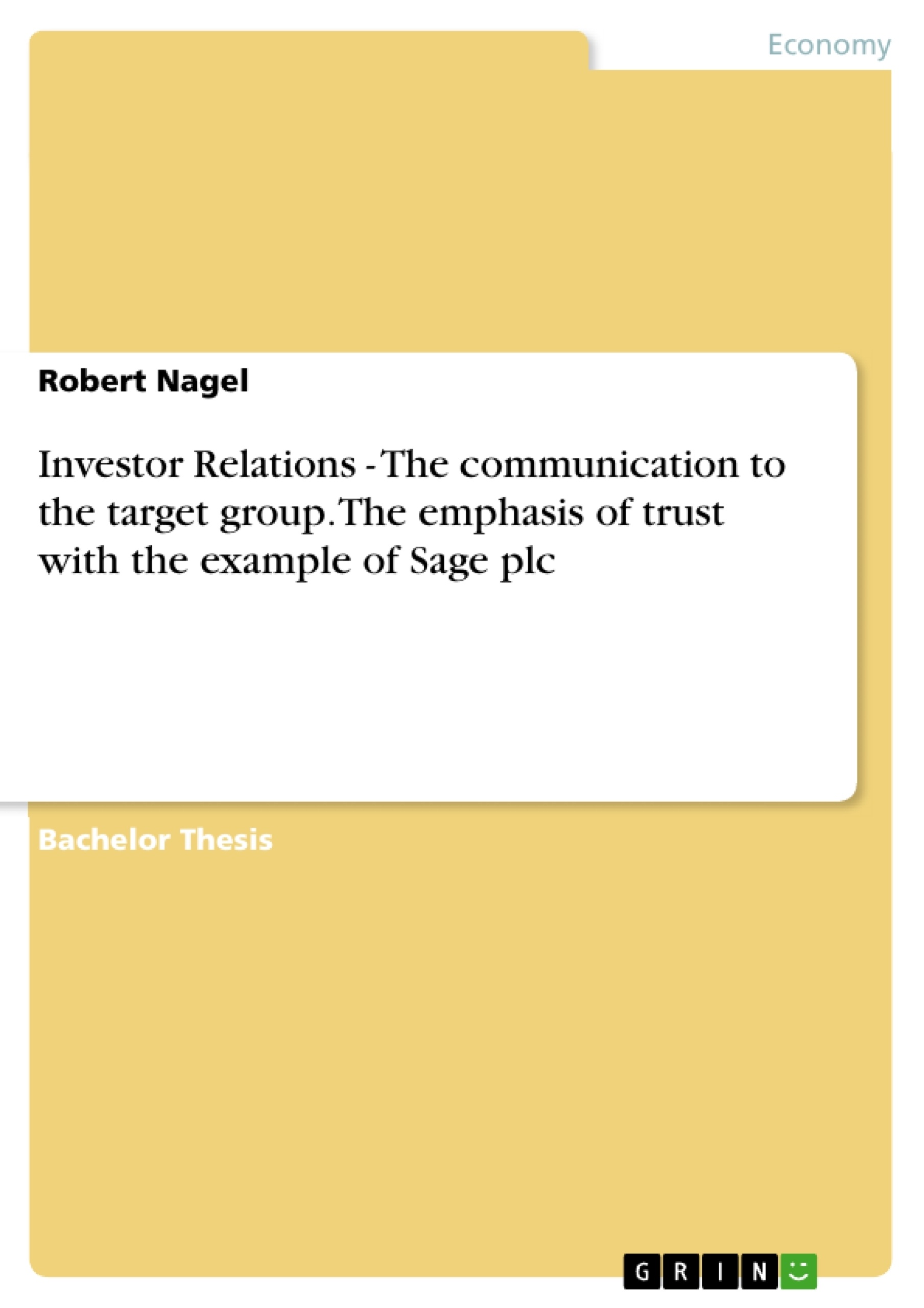The area of the investor relations as well as the capital markets have changed dramatically in the recent years. It is now an independent department, which has to balance the regulation aspect with the needs and wants of the stakeholders. Therefore, this department is now much closer to the field of marketing. There are several instruments available for the investor relations to be able to communicate with the target group as well as the main stakeholders and also to achieve the aims of the IR.
Table of Contents
- Abstract
- Table of content
- List of Figures
- List of Tables
- Chapter 1
- Introduction
- The importance of investor relations
- Project Outline
- Chapter 2
- Methodology
- Primary Data
- Secondary Data
- Limitations
- Chapter 3
- Literature Review
- What is investor relations?
- Investor relations and the closeness of marketing
- Investor relations principles
- The Target groups of investor relations
- The instruments used in investor relations
- Aims and importance of the indirect financial aim; trust
- Chapter 4 Findings
- Sage- The part of the investor relations
- The role of Sage
- Needs and wants of the target group
- Instruments of communication
- Attitudes within an relationship
- How does Sage evaluate the success of its work?
- Chapter 5 Analysis
- The comparison
Objectives and Key Themes
This research paper examines the changing landscape of investor relations and the crucial role of trust in building strong relationships with stakeholders. It delves into the communication strategies employed by the investor relations department of Sage plc, a leading IT company, to understand how trust is fostered and maintained in the investor relations context.
- The evolution of investor relations and its shift towards marketing principles.
- The importance of trust in investor relations and its impact on stakeholder relationships.
- The key communication instruments used by investor relations departments.
- The specific challenges and opportunities presented by the IT sector in terms of investor relations.
- The development and application of a synchronised trust chain model for investor relations.
Chapter Summaries
Chapter 1 introduces the concept of investor relations and its growing importance in today's business environment. It outlines the project's scope and objectives, setting the stage for the subsequent chapters.
Chapter 2 delves into the methodology employed in the research, outlining the use of both primary and secondary data sources. The chapter also explores the advantages and disadvantages of each data type and discusses any limitations that might impact the study's findings.
Chapter 3 provides a comprehensive literature review of investor relations, exploring its definition, aims, and principles. It examines the key target groups of investor relations, including institutional investors, analysts, and the media. The chapter also investigates the various communication instruments used in investor relations, including annual reports, one-to-one meetings, and the internet.
Chapter 4 presents the findings of the case study on Sage plc, focusing on the company's investor relations department, its target groups, and the instruments it utilizes. This chapter delves into the company's approach to building and maintaining trust with its stakeholders.
Chapter 5 analyzes the findings of the study, comparing the findings with the theoretical framework established in the literature review. This chapter offers insights into the specific application of the synchronised trust chain model in the context of Sage plc.
Keywords
Investor relations, trust, communication, stakeholders, target groups, communication instruments, annual report, one-to-one meetings, internet, Sage plc, synchronised trust chain, loyalty, credibility, IT sector.
- Arbeit zitieren
- Robert Nagel (Autor:in), 2003, Investor Relations - The communication to the target group. The emphasis of trust with the example of Sage plc, München, GRIN Verlag, https://www.grin.com/document/62286



